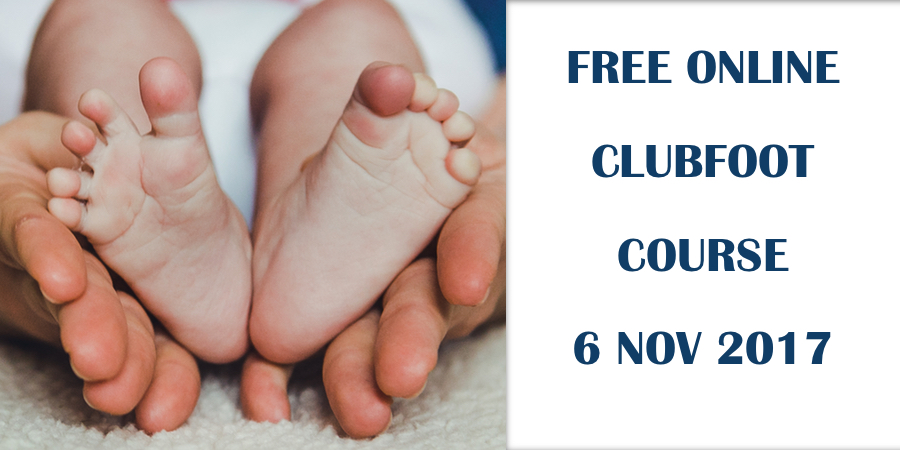On World Clubfoot Day we are delighted to announce that the 2017 Physiopedia MOOC (Massive Open Online Course) will be on Clubfoot. This course aims to provide a basic theoretical understanding of Clubfoot and to align global understanding of the theoretical principles underlying the management of children with Clubfoot.
Physiopedia and the International Committee of the Red Cross (ICRC) are collaborating for the third year running to deliver a free online course to develop knowledge of Clubfoot. This partnership has a proven record of delivering successful online courses with previous courses totalling over 20,000 registrations. We welcome the Global Clubfoot Initiative (GCI) to this partnership for the development and delivery of this new course.
The course will provide a framework to develop theoretical principles for the management of children with Clubfoot relevant in all contexts. It will introduce the pathoanatomy, etiology and epidemiology underpinning Clubfoot, explore assessment and the roles of the multidisciplinary team, as well as provide a theoretical understanding of management techniques and related clinical considerations. The course is aimed at Physiotherapy and Physical Therapy clinicians, students and assistants but is also relevant for other interested health care professionals such as prosthetists/orthotists, occupational therapists, nurses or medical doctors. The global network formed through this course will allow for shared knowledge and experiences to support good health care and a better quality of life for children with Clubfoot around the world.
Clubfoot is a complex, congenital deformity of the foot also known as ‘congenital talipes equinovarus’ (CTEV) caused by the abnormal development of a baby’s bones, ligaments and muscles whilst in the womb. Around the world, 150,000 – 200,000 babies with clubfoot are born each year, approximately 80% of these will be in low and middle income countries. Without treatment, the clubfoot deformity causes a lifetime of disability as the affected individual experiences pain and difficulty in walking. Most cases of clubfoot can be successfully treated by a multidisciplinary team of healthcare workers with methods that may include a combination of stretching, casting, and bracing. The Ponseti Method, a non-surgical treatment that includes gentle manipulation of the feet followed by the application of plaster casts and temporary bracing, is considered the “gold standard” treatment, leading to a normal, productive life. The goal of World Clubfoot Day is to raise awareness about Clubfoot disability and its prevention using the Ponseti Method, the theory of which will be covered through this free course.
